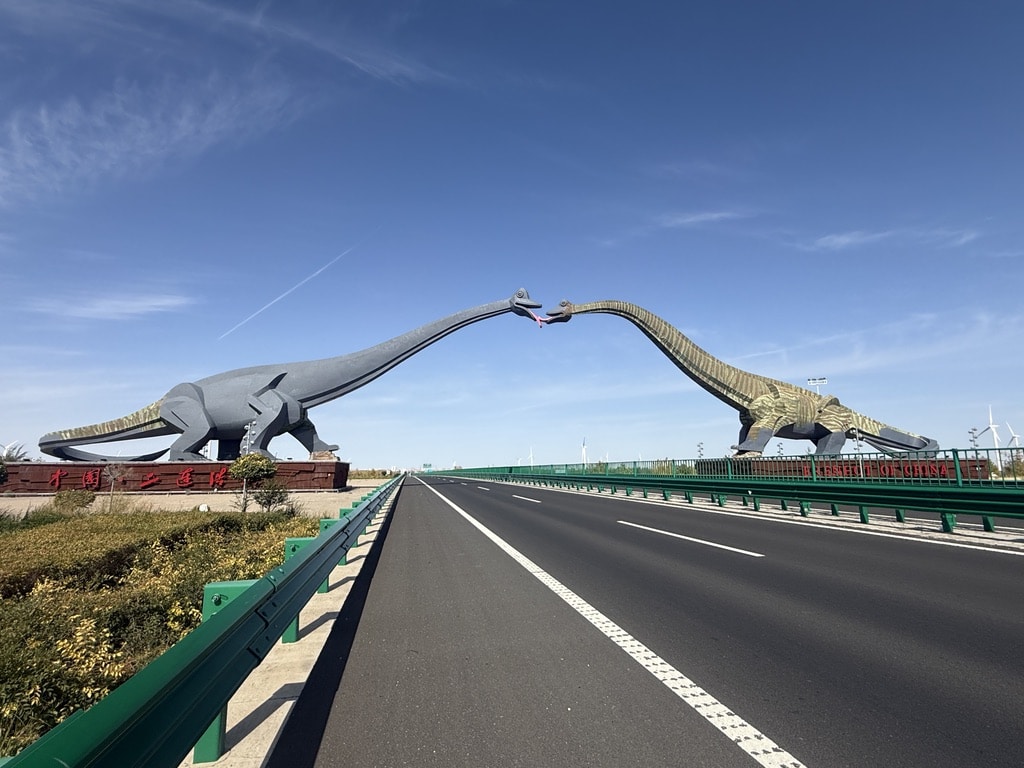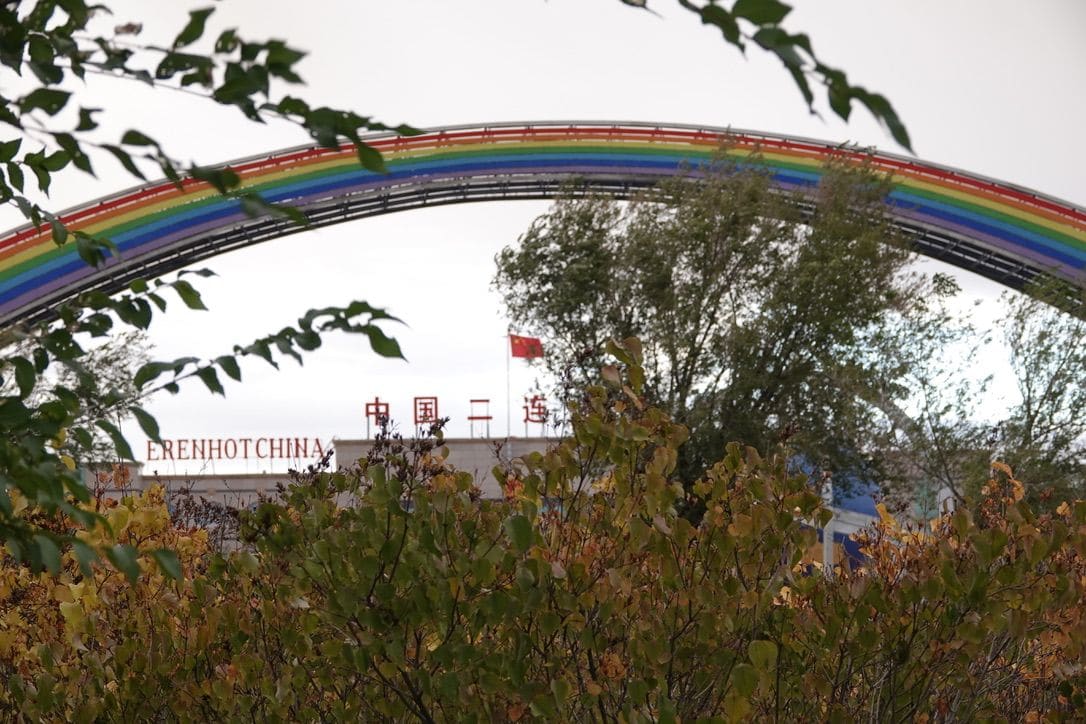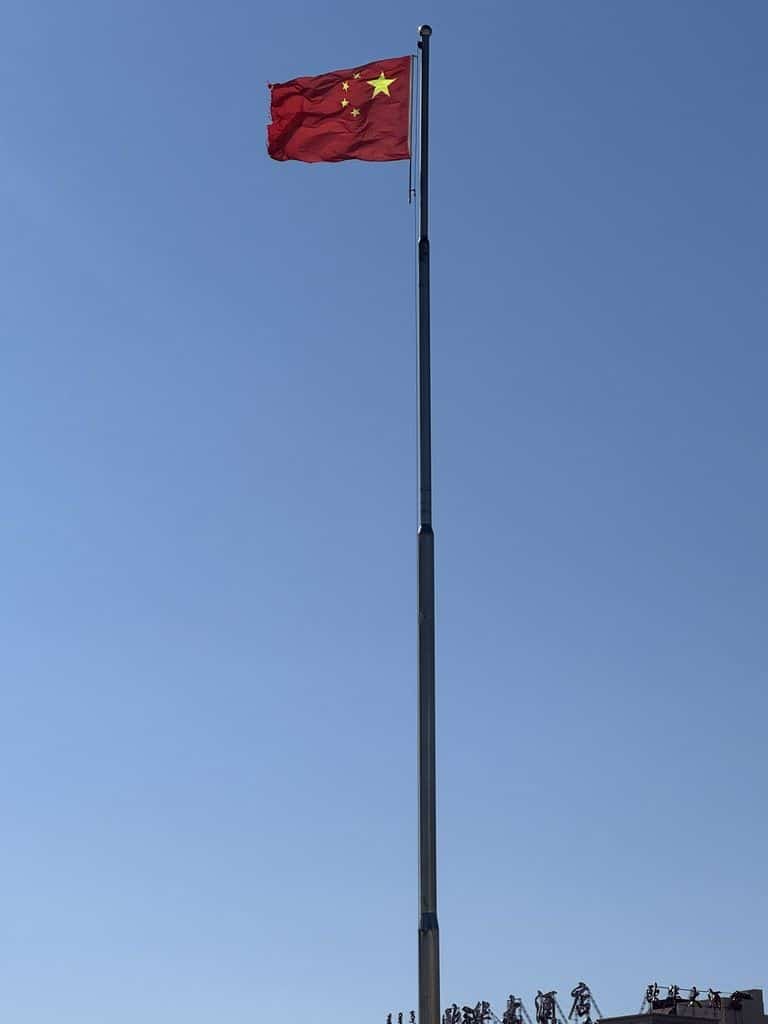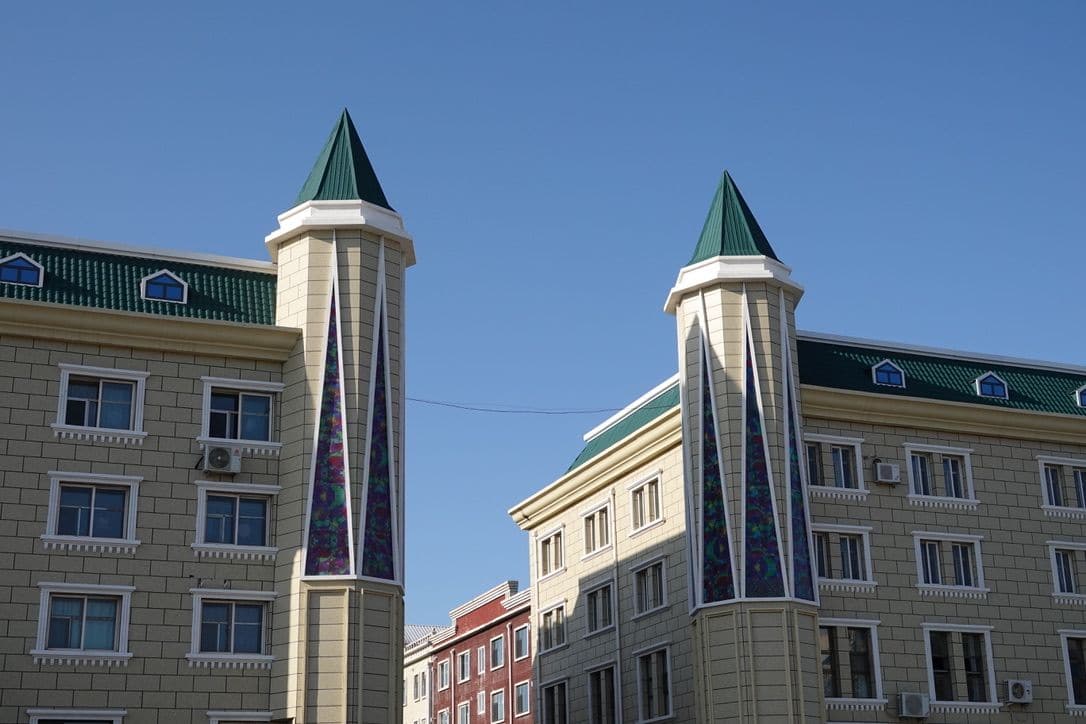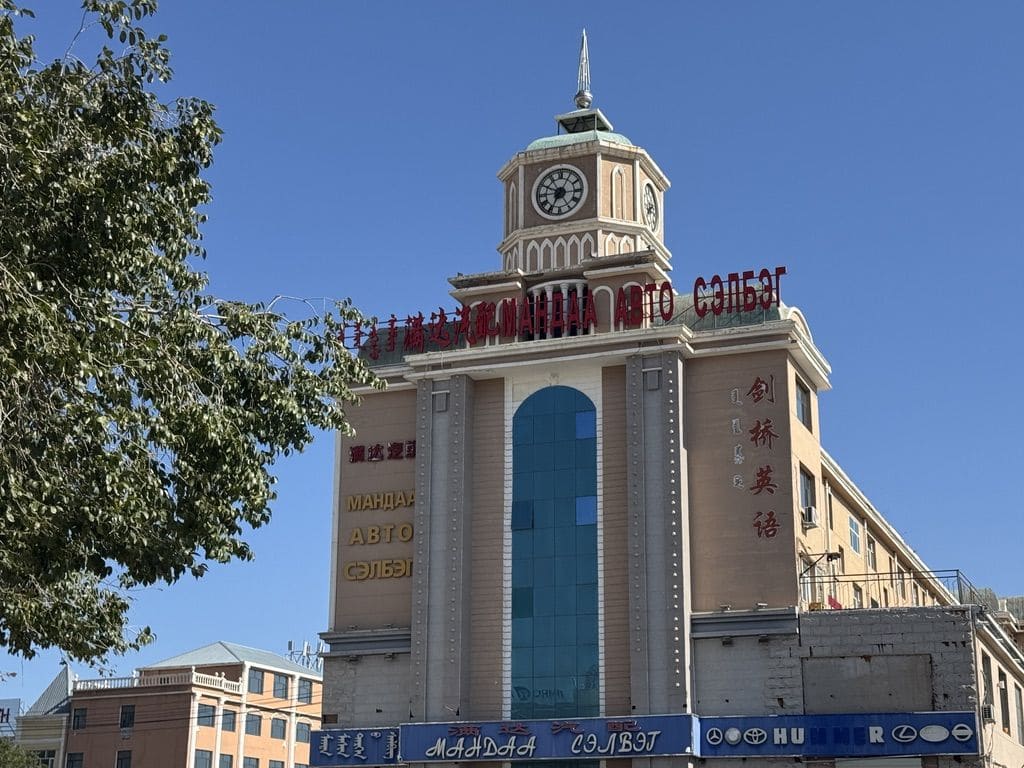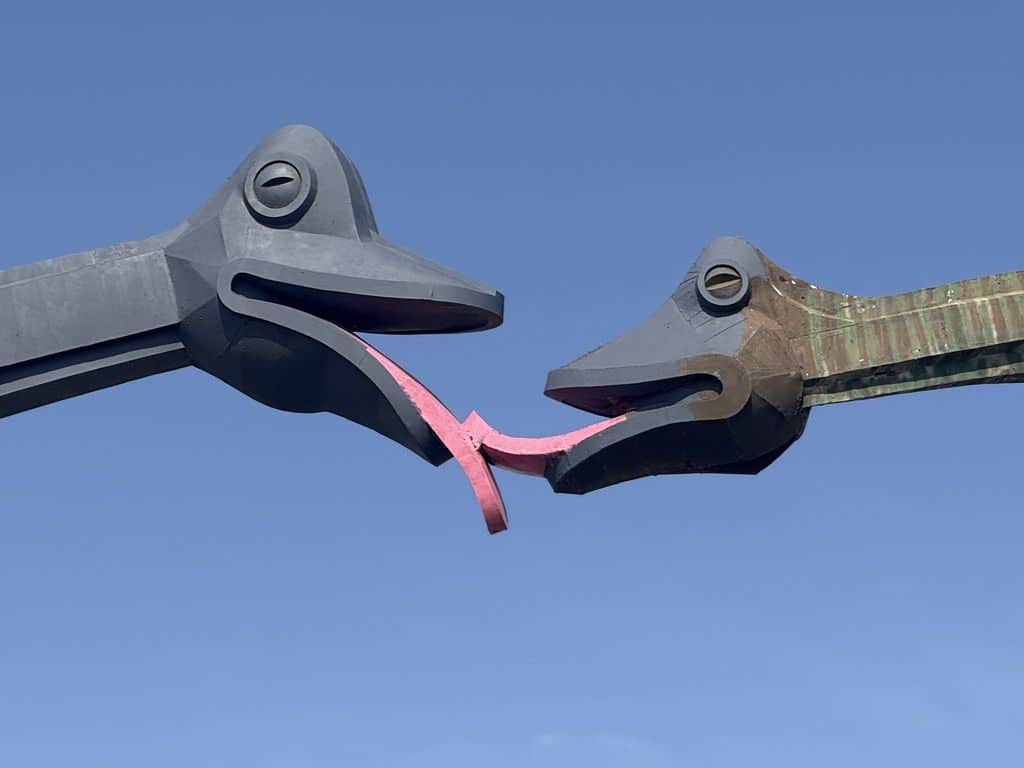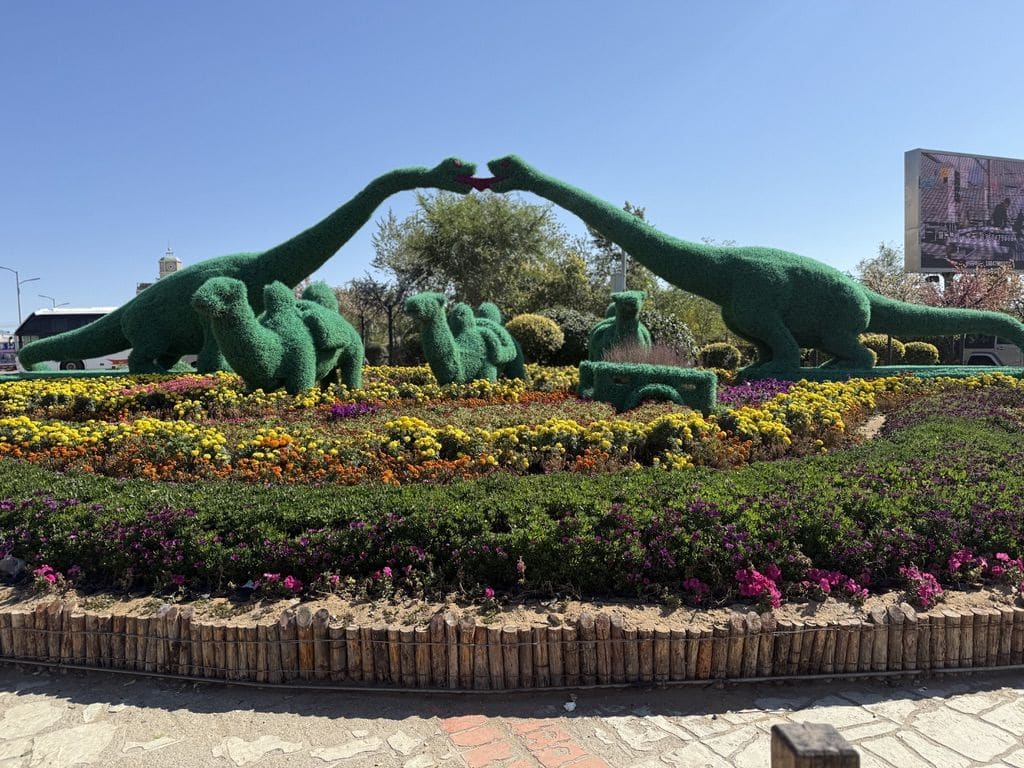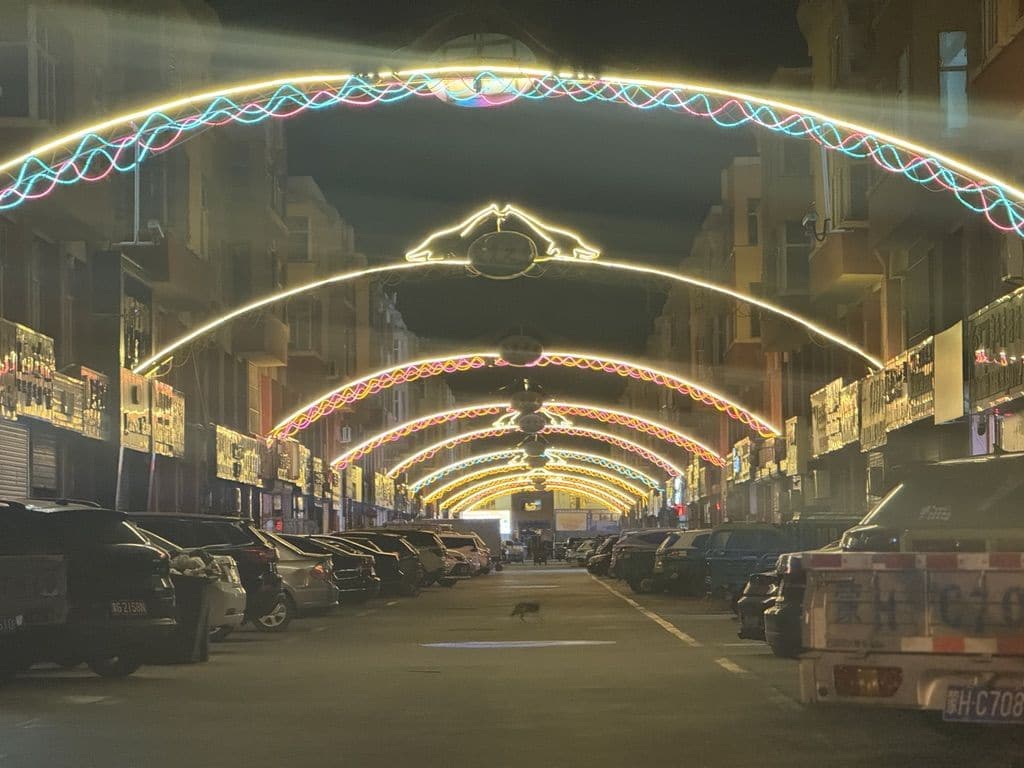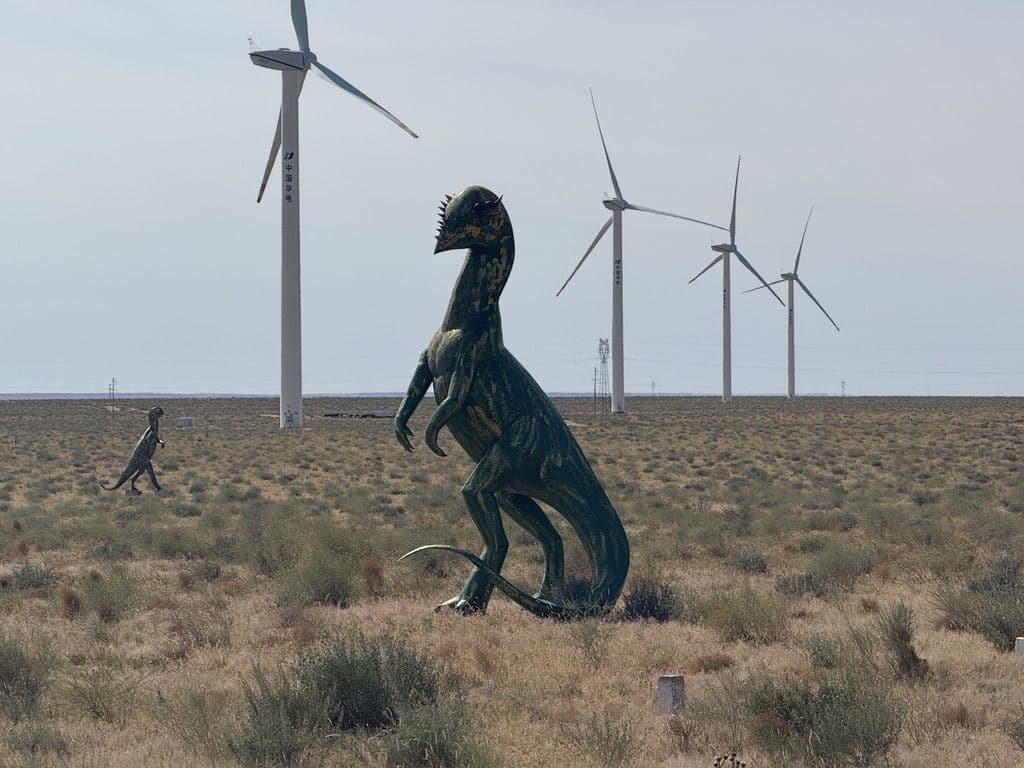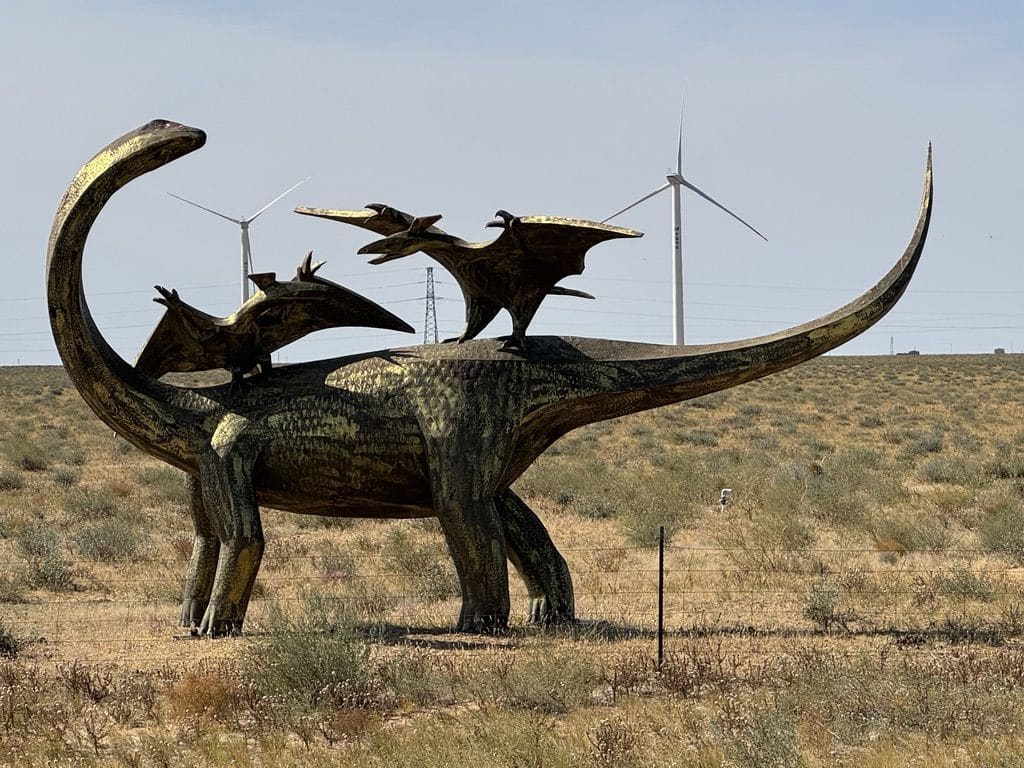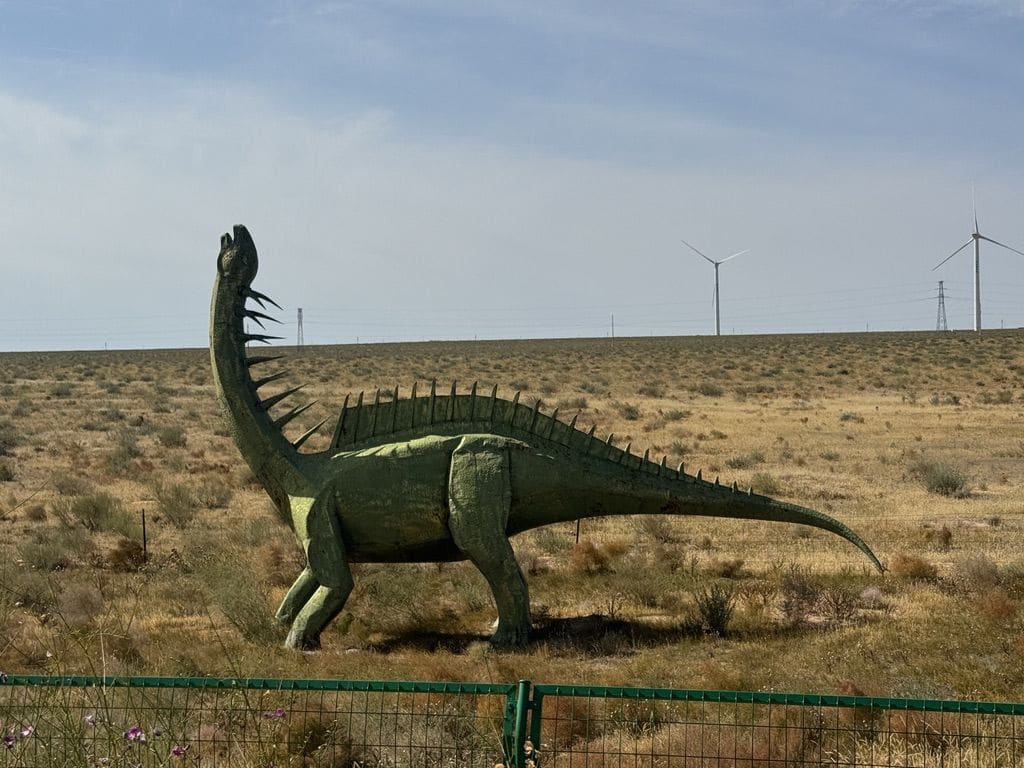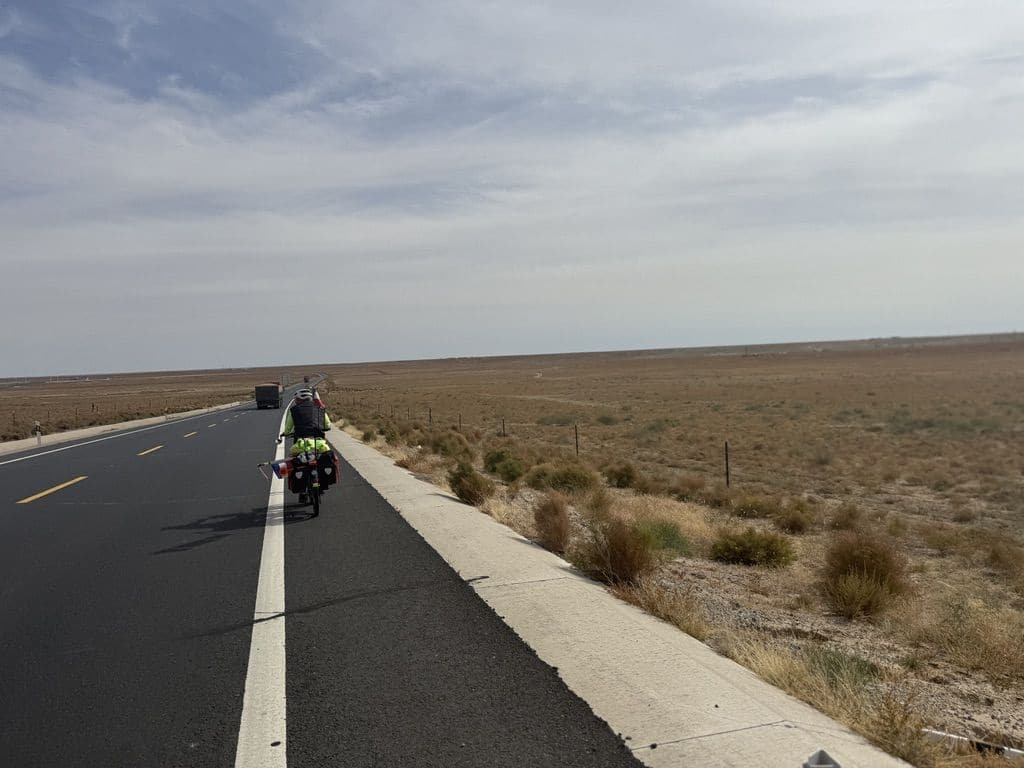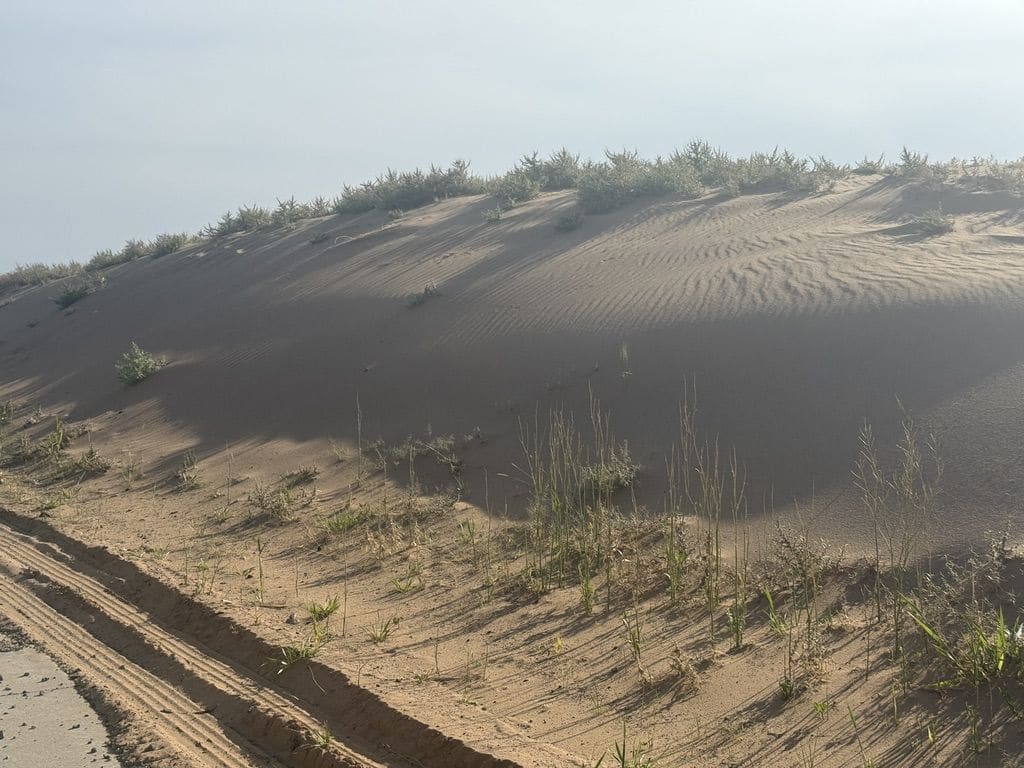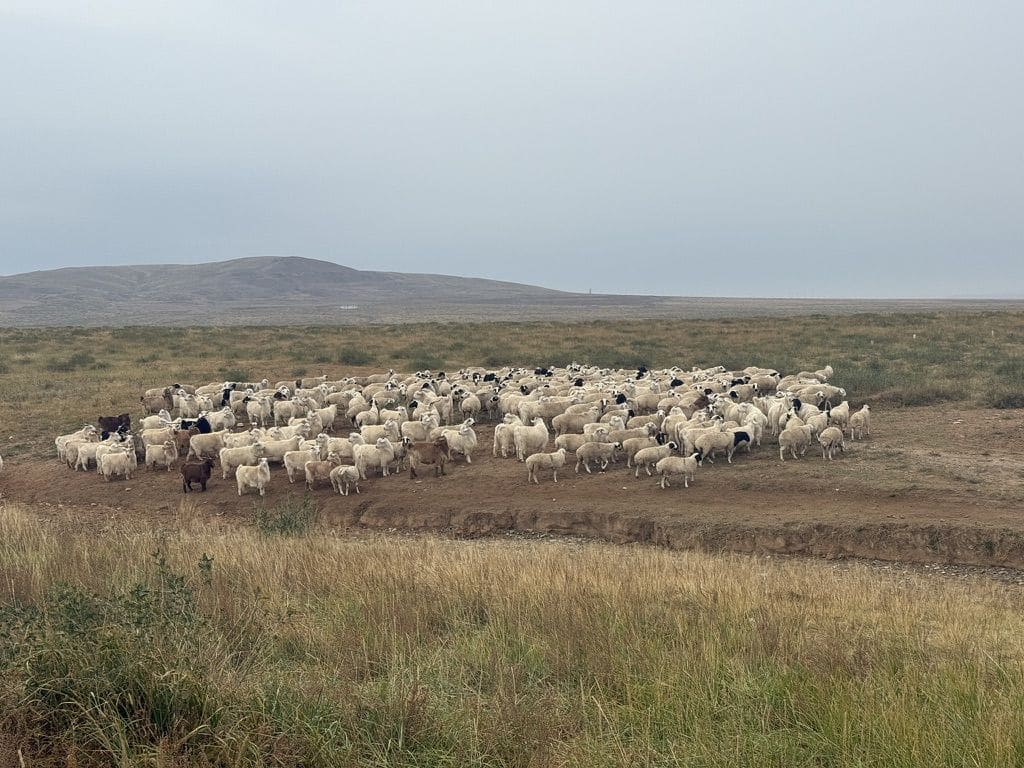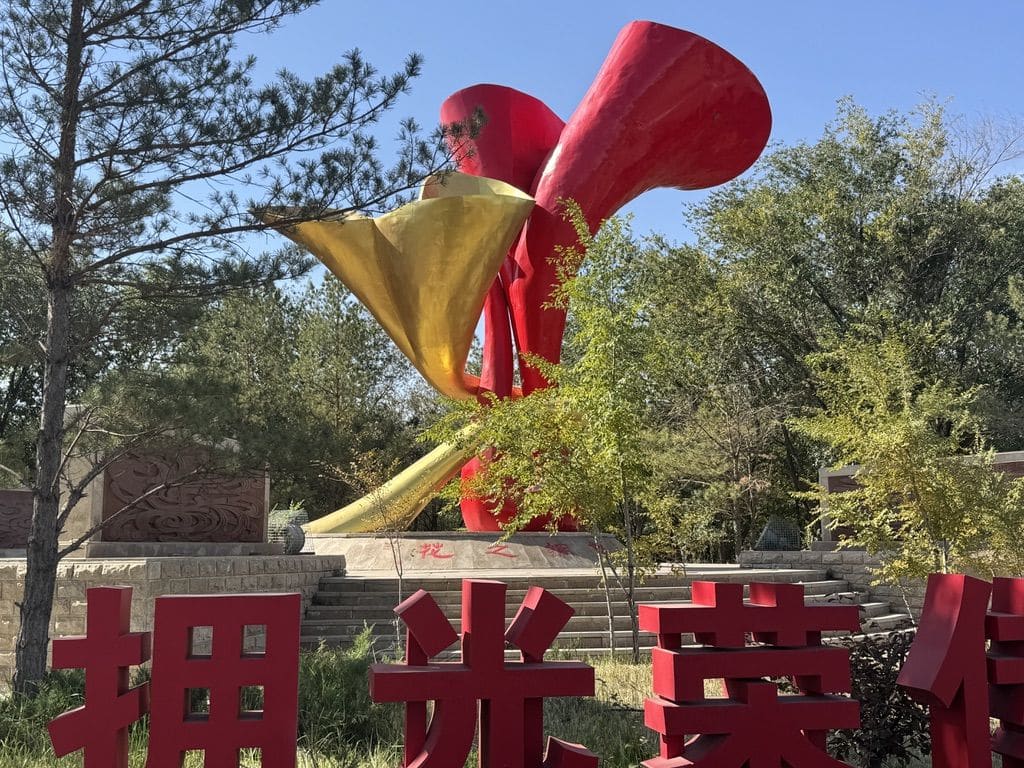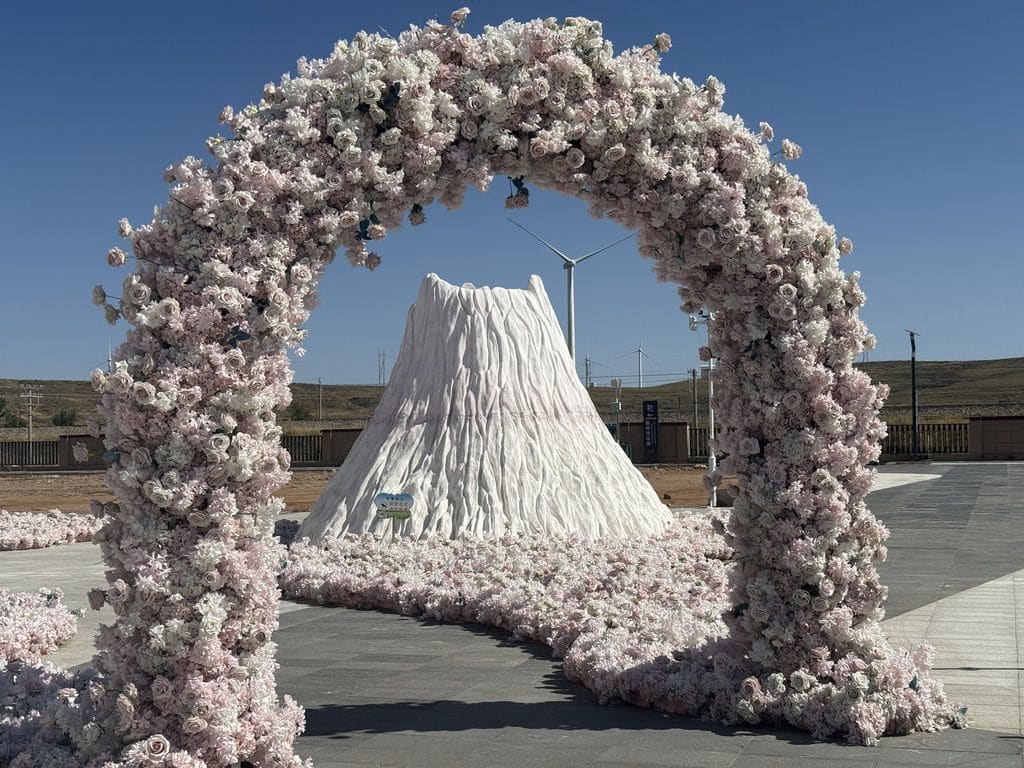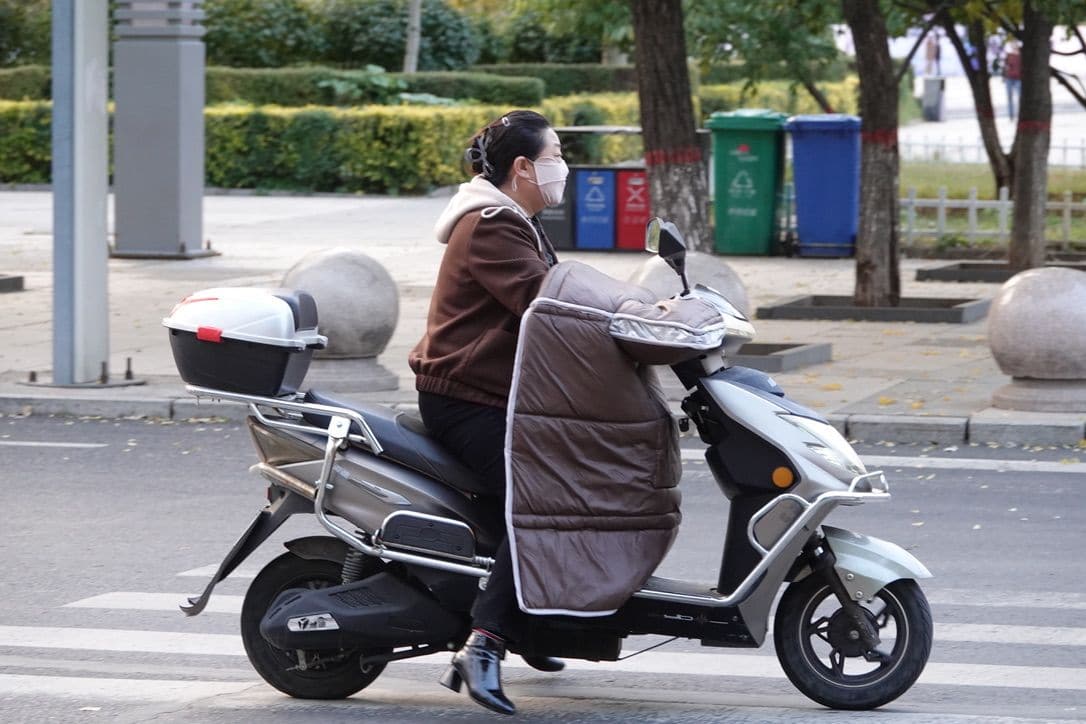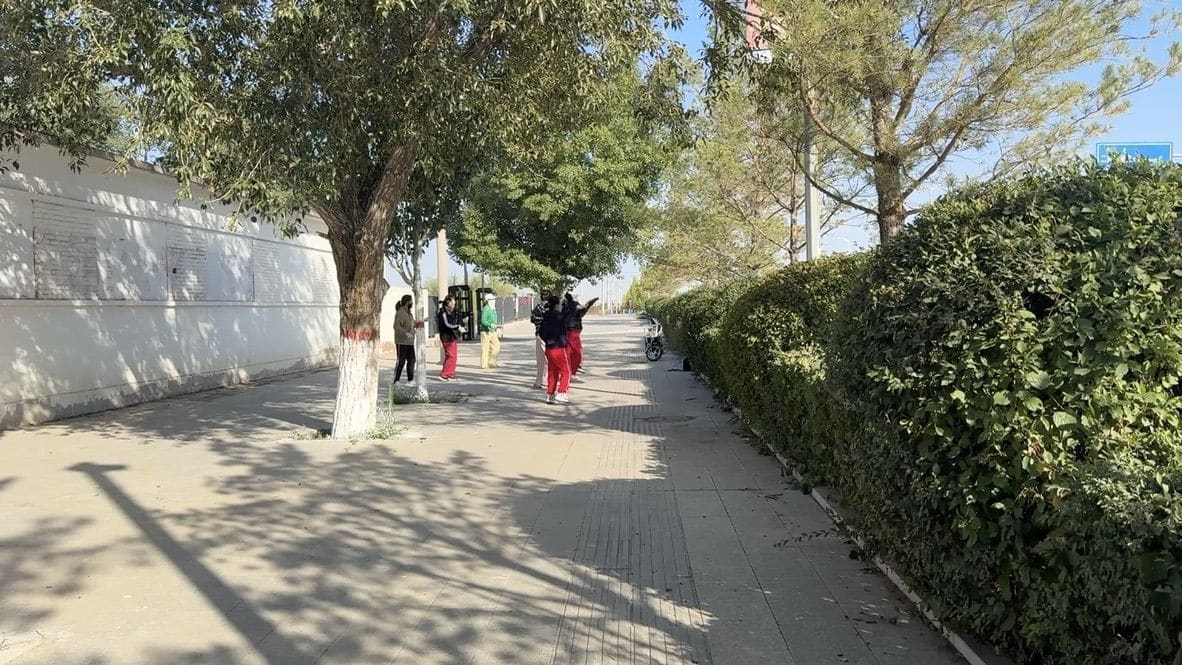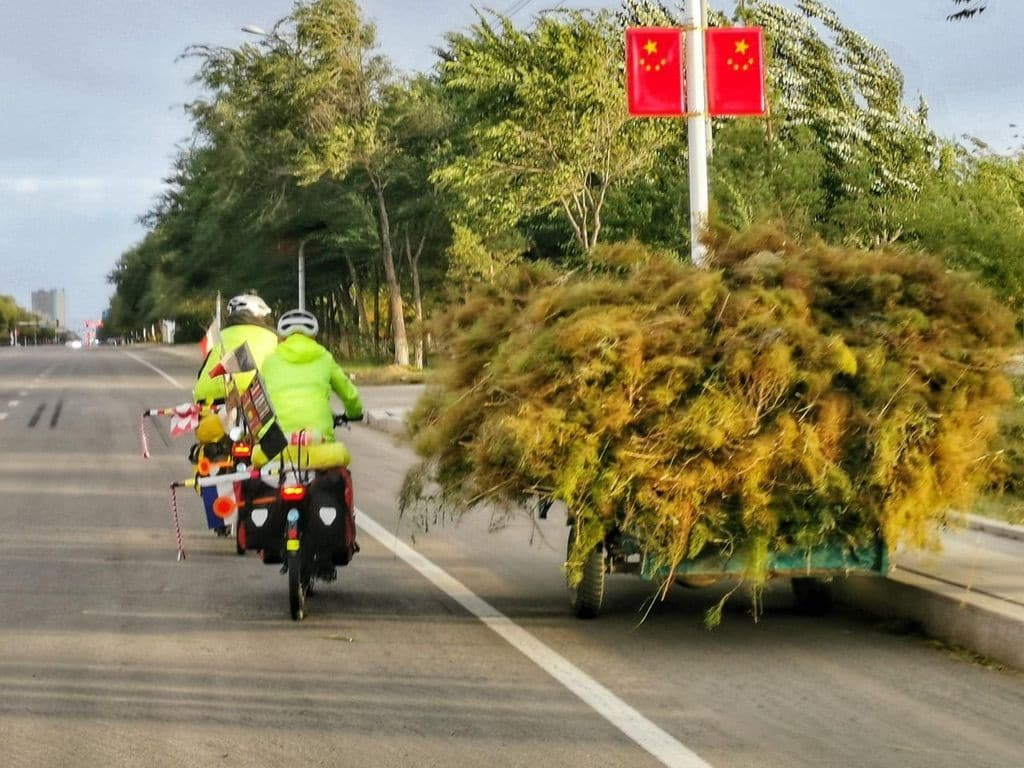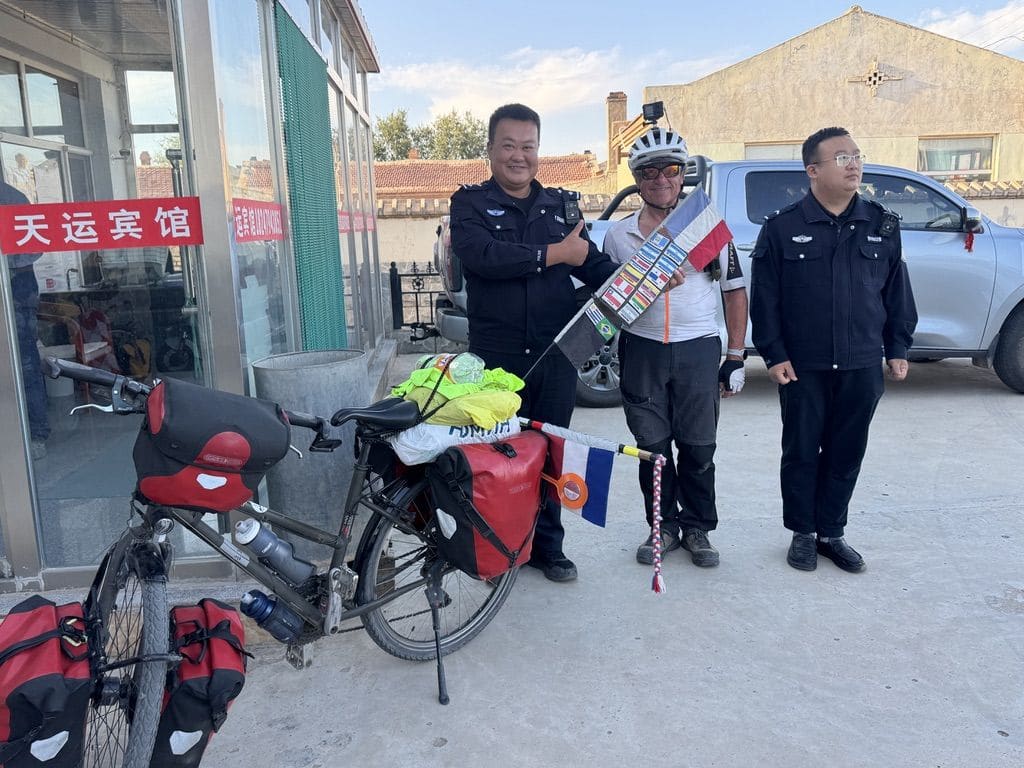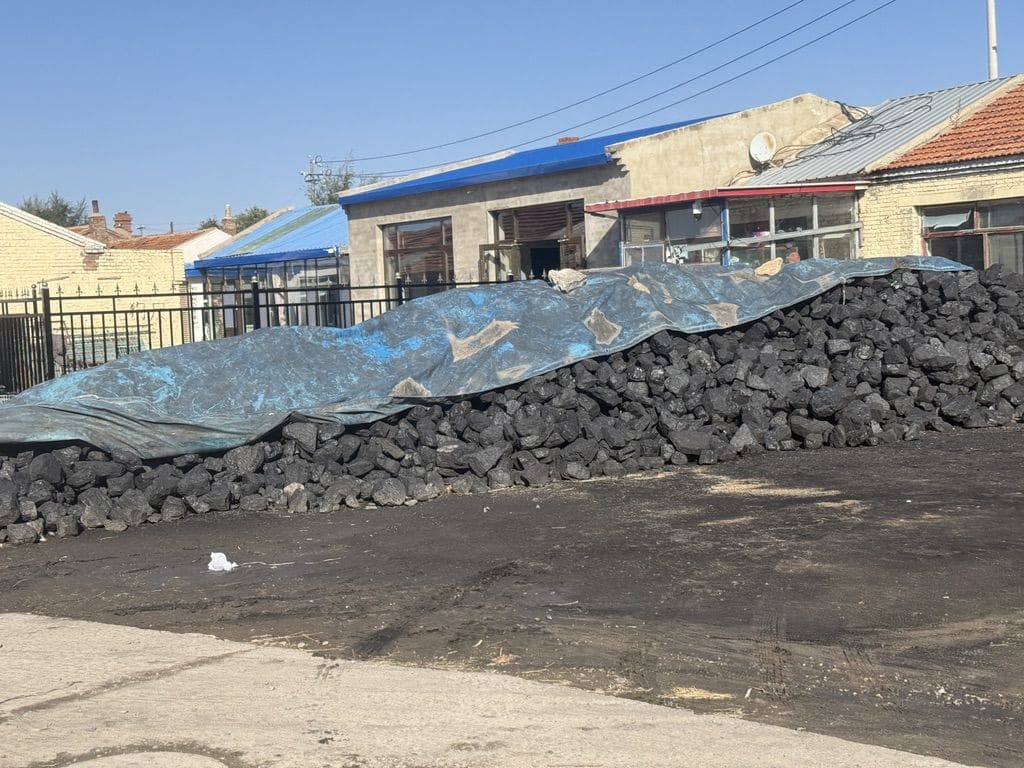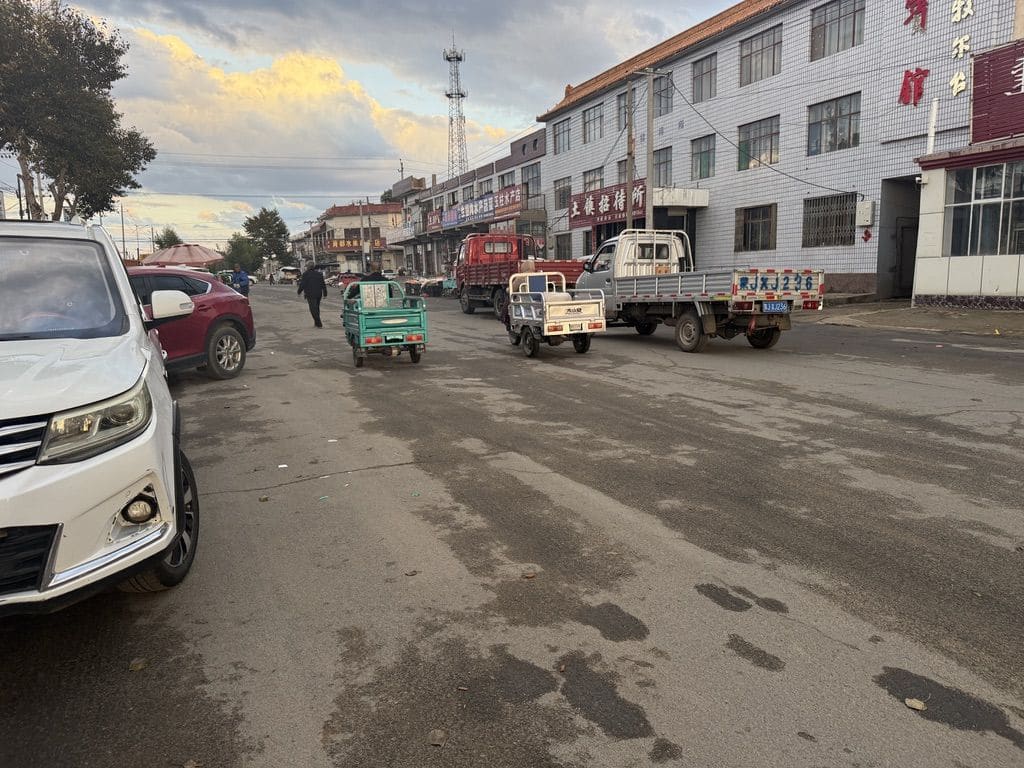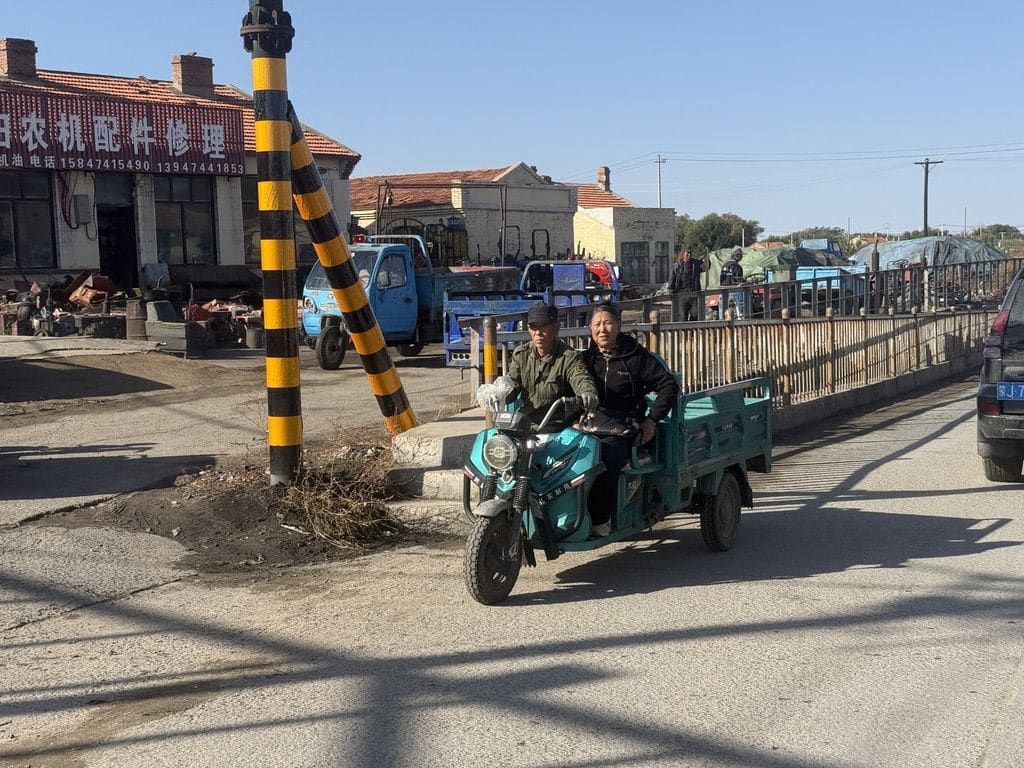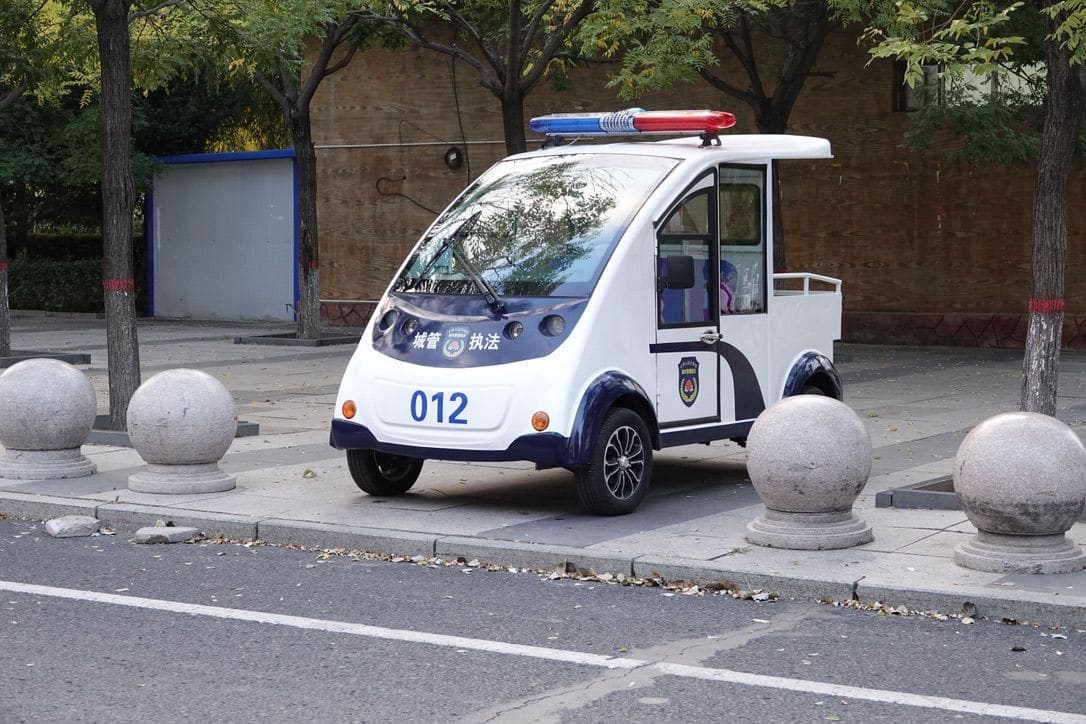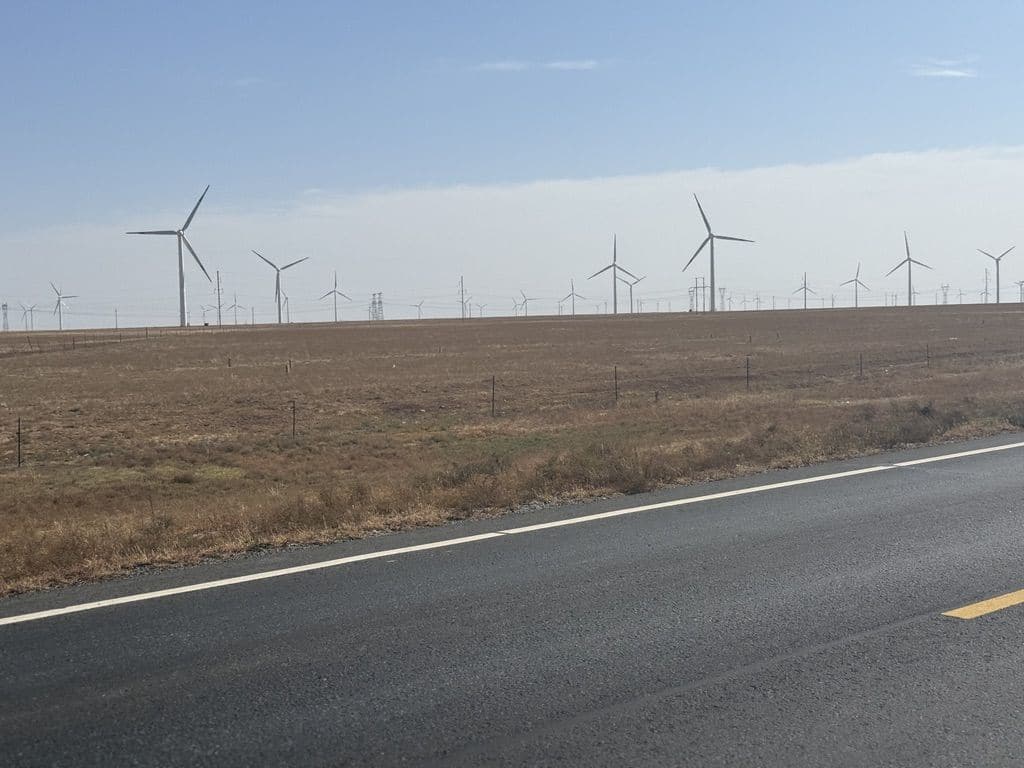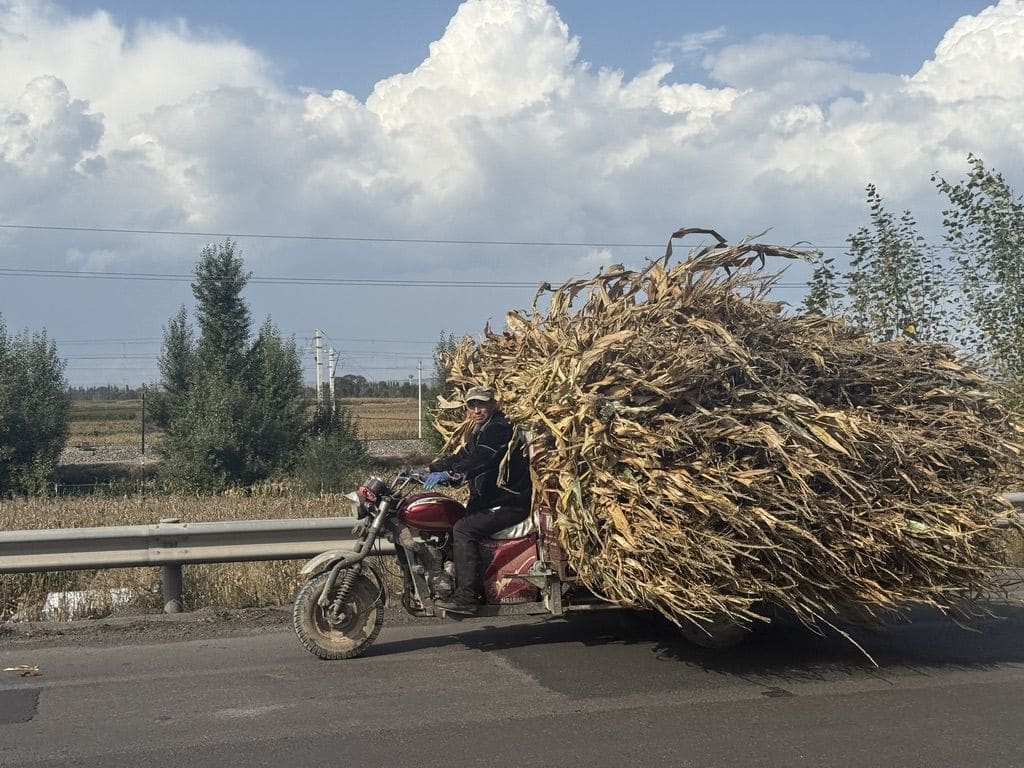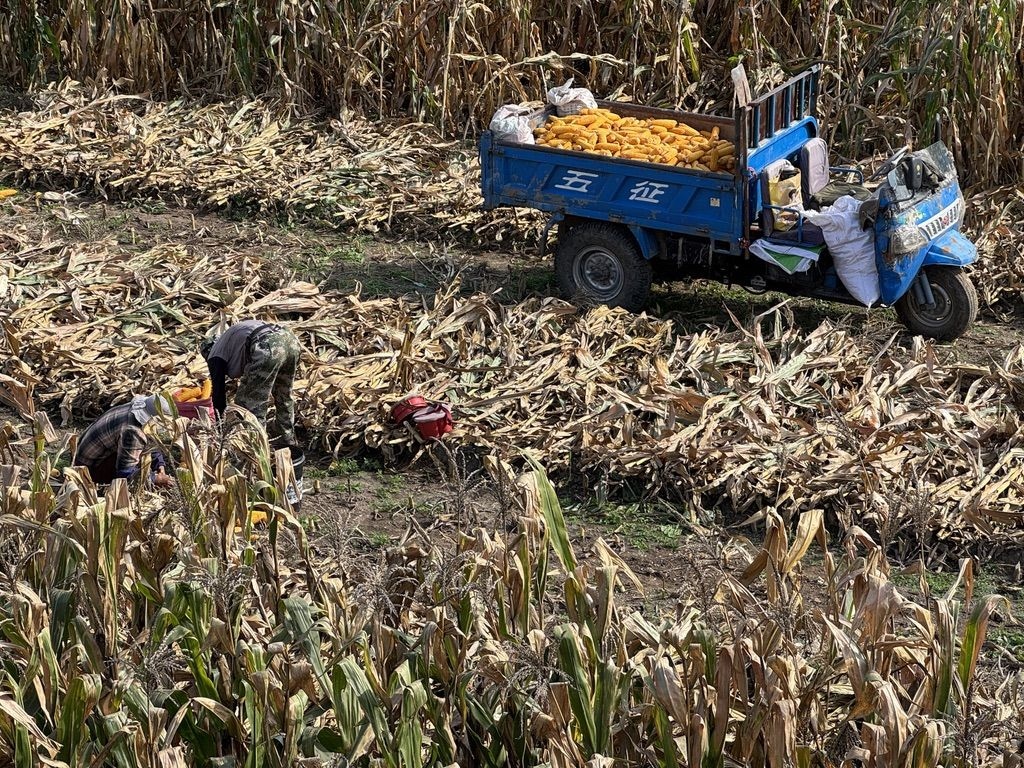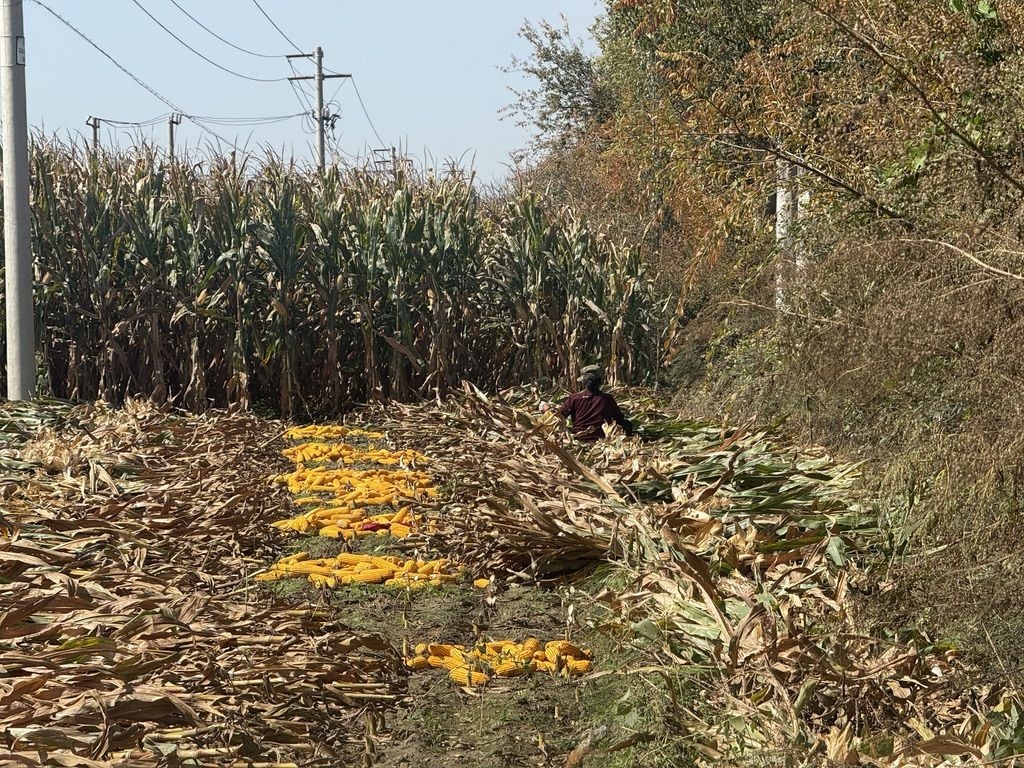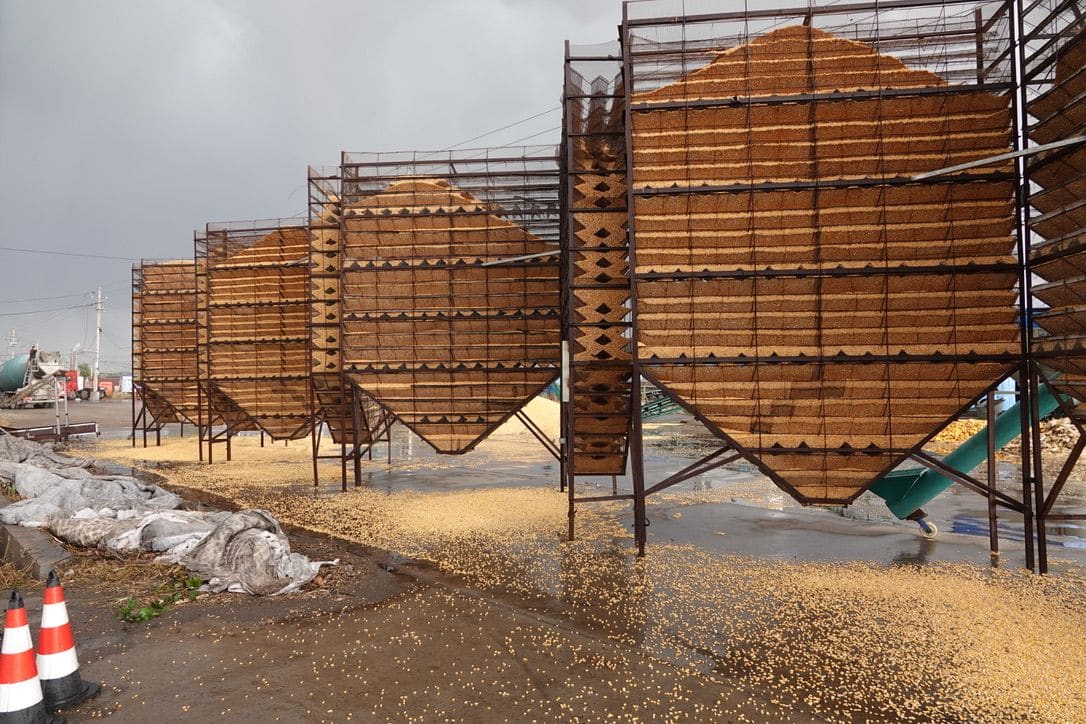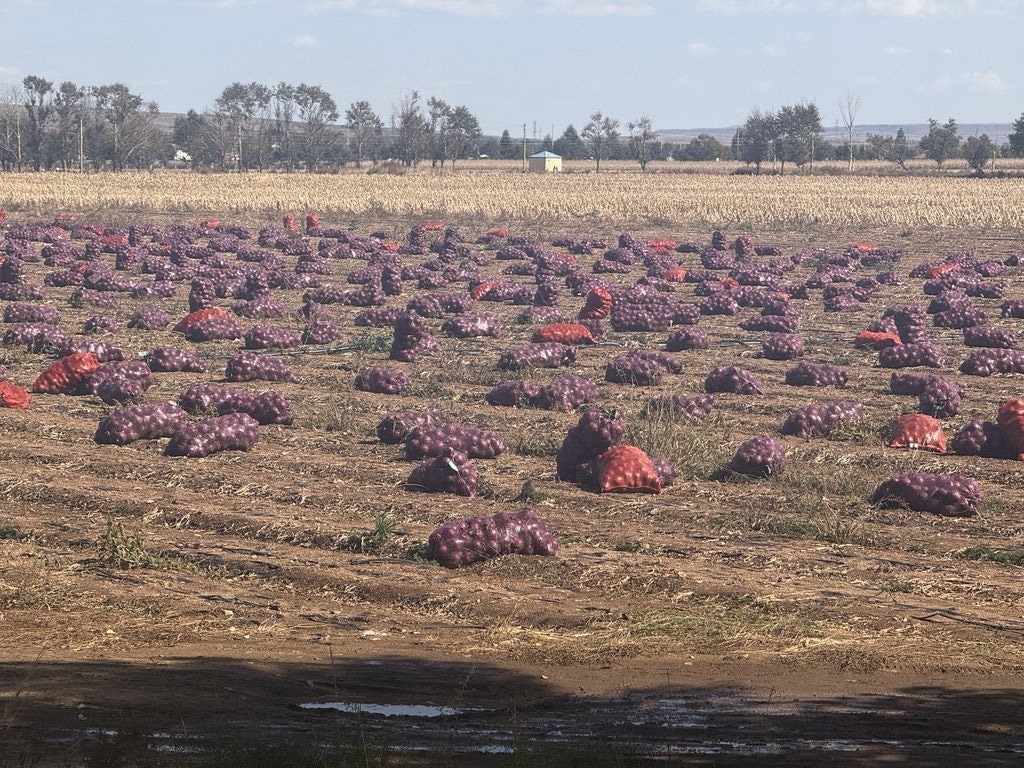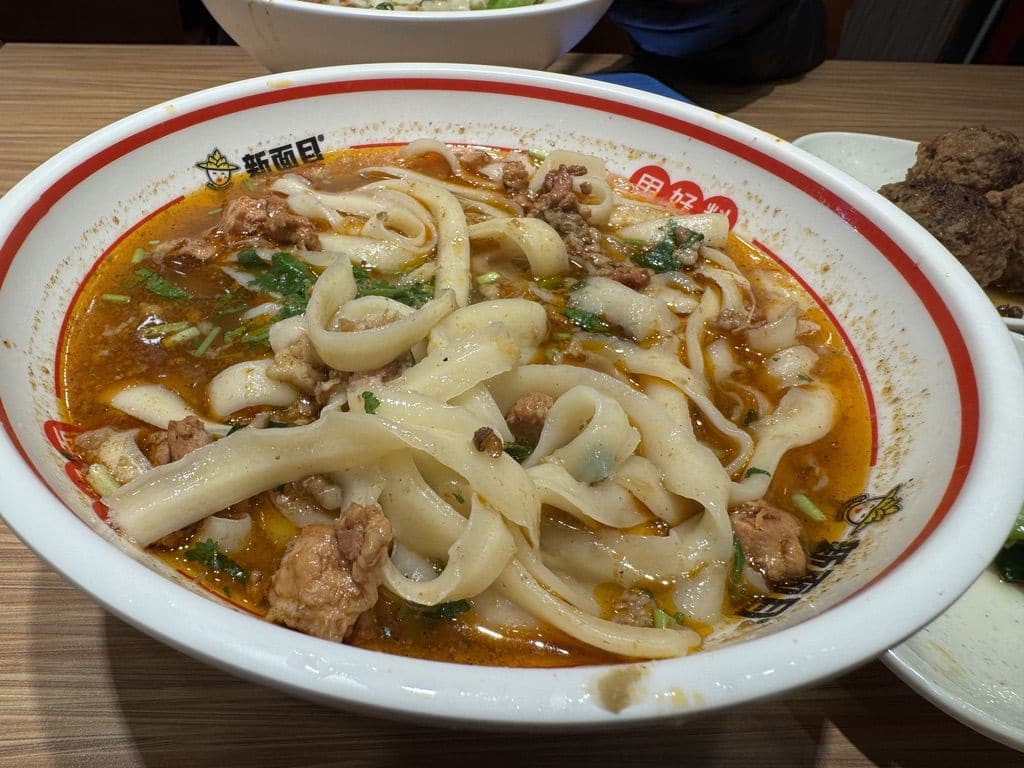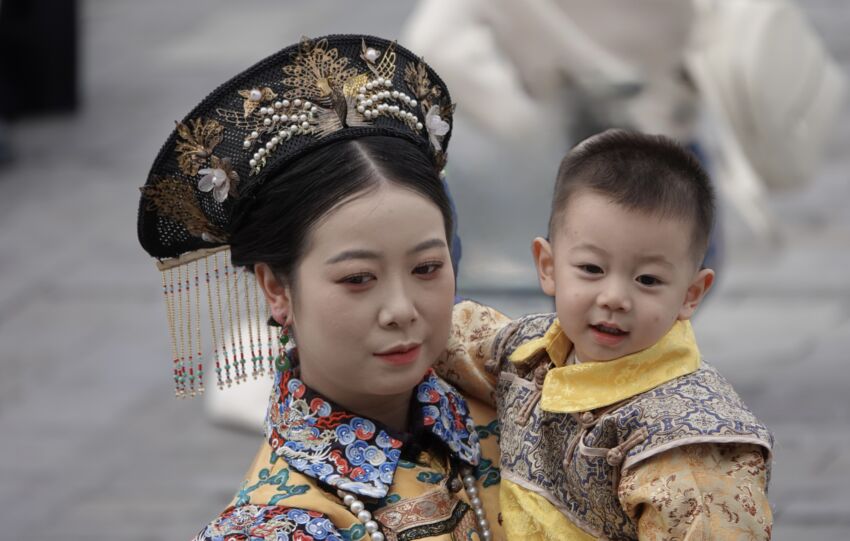China is back
Share This Article
From Tuesday, September 23 to Thursday, October 2, from the Sino-Mongolian border to Badaling in China.
Border post
On Tuesday, September 23, we re-enter China via the Erenhot border crossing. A new town artificially developed by the Chinese government to encourage people to come and live in this isolated area of the Gobi Desert. Erenhot is a very important commercial hub with Mongolia.
The dinosaurs
The city’s symbol is the dinosaur. They are everywhere in all shapes and sizes. There is even a museum, but all the explanations are in Chinese, so it’s impossible to understand them. We leave the city on Thursday, September 25th, taking the highway. On each side of the road, we can see reproductions of different species of dinosaurs that existed, for 20 kilometers. The exhibition ends with two huge brontosauruses kissing over the highway. The Chinese really always do things in a big way.
Inner Mongolia and still the desert
The northern part of China is also called Inner Mongolia. We still have to travel 300 km of the Gobi Desert, the Chinese part. A less exciting crossing than in Mongolia, because in China the road is closed on both sides by fences. Animal life has practically disappeared and it is impossible to camp. There are only three small towns in this part of the desert. Each is about 100 km apart, which forces us to travel great distances to find accommodation. This is undoubtedly one of the reasons why cyclists abandon the roads in this area and take the train.
The police come to our rescue
We pass through sparsely populated areas, but the interesting thing is that we have another view of China, we discover a population living simply. Cities are slowly emptying of their inhabitants. They are leaving for urbanized areas in the hope of a better life. The number of abandoned and dilapidated housing is a sign of this rural exodus.
In the three desert towns, we had to contact the police each time to get permission to stay in hotels, which were mainly frequented by Chinese people. The police were unaccustomed to tourists but incredibly kind. There was, of course, passport control first, but then they remained at your service. In Tumu’Ertaizhen, the policeman even took us to the supermarket in his car to do our shopping.
On the way to the Great Wall
After finishing with the desert, we head to Badaling, a town located near the Great Wall of China. A journey through the Chinese countryside with many crops including food corn and potatoes. Foreign tourism in these places is non-existent, yet it is interesting to see how the population lives in these places, far removed from the major Chinese cities. Life here seems very difficult, with sometimes very basic dwellings. The main means of transport is not ultra-modern cars, but rather tuk-tuks.
Moments of happiness:
The Chinese language, which we don’t speak, limits our interactions with the population. But the smiles of people, the thumbs-up they give us, the special attention they pay to our bikes and especially to the flags hanging from them, is a pure moment of happiness. We could say that it’s an exchange without words, but only their gestures become important and unforgettable moments.
Course
We covered 686 km over the course of 10 days. Click here to see a map of our journey.
Met :
- No cyclists or tourists met during these 10 days. It must be said that this route is not a tourist destination.
- Meetings and discussions with the police who were of great help to us in these isolated areas.

